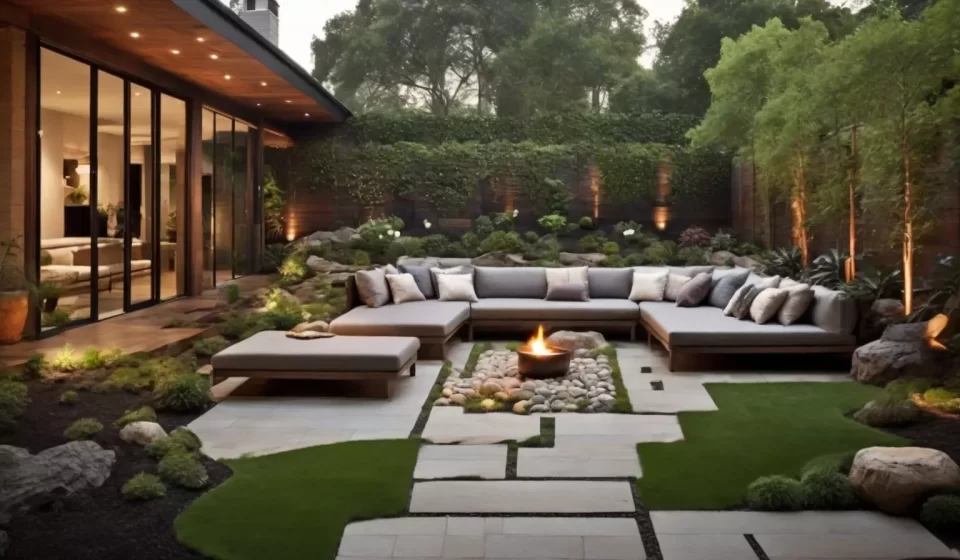Every British garden has one—that odd patch of grass, shady corner, or underused nook where even the weeds can’t be bothered to grow. These overlooked areas are the untapped potential of your property, and today’s insulated garden rooms are turning them into the best ‘rooms’ in the house.
Thanks to innovation in design and construction, you no longer have to choose between losing green space or gaining functional living space. A garden room offers the best of both worlds—blending nature with comfort, and utility with style.
Whether you want a peaceful studio, a private office, or a cosy retreat away from the clatter of daily life, a garden room is a clever way to expand without encroach. Let’s explore how it cleverly increases outdoor space—without compromise.
Contents
- The Garden Room Revolution: A Smarter Use of Space
- Why Most Gardens Waste More Space Than They Should
- How Garden Rooms Turn Corners into Assets
- Comparing Outdoor Buildings: Shed, Conservatory or Garden Room?
- FAQs: Making the Most of Your Outdoor Space
1. The Garden Room Revolution: A Smarter Use of Space
There’s a quiet revolution happening across UK gardens. Homeowners are no longer seeing outdoor space as something to be stared at through the kitchen window—they’re using it, living in it, and making it work harder.
Insulated garden rooms offer:
- A detached space without the disruption of a full extension
- A year-round room that feels separate, yet connected
- A more energy-efficient alternative to conservatories
- Planning permission freedom (in many cases) under permitted development
- A design that adapts to the contours of your garden
According to the Royal Institute of British Architects (RIBA), modern outbuildings like garden rooms are increasingly used to “unlock dead space” and create better links between the home and the outdoors.
2. Why Most Gardens Waste More Space Than They Should
It’s a truth few of us want to admit: much of the average UK garden goes unused. The far corners collect forgotten flower pots, sun loungers fade in a damp heap, and weeds thrive in spots we never visit.
Common reasons outdoor space gets wasted:
- Lack of shade or shelter
- Poor drainage or uneven ground
- No clear function or flow
- Inaccessibility from the main house
- Just plain bad weather
But one smartly placed, well-designed garden room can transform even the trickiest corner into something inviting—and useful.
3. How Garden Rooms Turn Corners into Assets
Think of a garden room as a bridge between indoors and out. It creates a functional space where none existed before—without paving over your lawn or dominating your garden.
Ways garden rooms optimise unused space:
- Built into boundaries – Designed to sit against fences or corners for minimal impact
- Custom dimensions – Tailored to fit narrow, sloping or odd-shaped plots
- Dual aspect use – Combine indoor space with adjoining decking or patio for versatile living
- Hidden storage – Many incorporate concealed storage to reduce clutter elsewhere in the garden
Add in stylish materials, matching landscaping, and clever lighting, and it feels less like an afterthought and more like an architectural feature.
4. Comparing Outdoor Buildings: Shed, Conservatory or Garden Room?
| Feature | Shed | Conservatory | Insulated Garden Room |
| Useability | Storage only | Often too hot or cold | Year-round living space |
| Insulation | Minimal | Variable | High-quality insulation throughout |
| Natural Light | Poor | High, often excessive | Controlled, with double-glazing |
| Planning Permission | Usually not required | Sometimes required | Usually under permitted development |
| Comfort Level | None | Inconsistent | Fully functional, homely environment |
| Value Added | Minimal | Moderate | Strong return on investment |
Garden rooms sit in a sweet spot: more sophisticated than a shed, more comfortable than a conservatory, and far more flexible than either.
5. FAQs: Making the Most of Your Outdoor Space
- Can a garden room work in a small garden?
Absolutely. Custom builds can be scaled to fit even compact spaces, often using corners or boundaries to avoid dominating the layout.
- Will I lose too much of my garden?
Not if it’s planned well. You’ll gain a usable room and can often landscape around it to improve the overall garden flow.
- Do I need planning permission?
Most garden rooms fall under permitted development rules, especially if under 2.5m high and not used for overnight accommodation.
- Is it really usable in winter?
If it’s properly insulated—walls, floor and roof—yes. A quality garden room will be as warm and cosy as your lounge.
- Can I move it later?
Some modular designs allow for future relocation, though most permanent installations are fixed for stability.
Conclusion: Think Outside the Floorplan
If your garden is hiding a forgotten corner or you’re craving more space but can’t bear the idea of builders in your living room, a garden room might just be your perfect match.
With minimal disruption, maximum comfort, and clever design, it increases outdoor space without taking away the green, the light, or the charm of your garden.
After all, why waste your outdoors when you can welcome it in?

